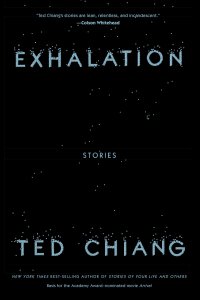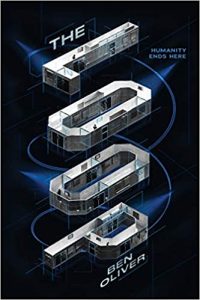Russell Letson reviews Joe Haldeman
Joe Haldeman’s Work Done for Hire is a tricky book to review, thanks to its membership in the intrigue/mystery/pursuit family, the pleasures of which include having to withhold from the reader answers to various questions about who is doing bad things and how they’re doing them. So I am constrained from describing or discussing much of what I enjoyed about various plot twists and turns and devices, or speculating about whether X or Y represents a palmed card or thumb on the scales. Fortunately, this is also a book full of features and structures that can be described and discussed without spoiling the fun of having the magician’s hat produce not a rabbit but, say, an alligator, or an acrobat, or a scary clown with a chain saw.
One of the puzzles that can be examined is precise genre identification. First approximation, provided by the cover copy (which exists in front of the Spoiler Curtain) is that it is an intrigue thriller: Jack Daly, ex-army sniper turned novelist, finds on his doorstep a fancy rifle, a wad of cash, and a note. The note instructs that he is to kill a person to be named later, or else: viz., his lover, Kit, will die unpleasantly. Jack’s problem, clearly, is how to dodge this job and save Kit, but that part of the story only begins 100 pages in. Very gradually it becomes clear that while the setting feels contemporary, we are actually in a near future (roughly 2030), which makes this a science-fictional intrigue, etc., novel. And, just to put the cherry on top, we get to read sections of a novella that Jack is writing in a third, related genre with its own ambiguities. I think I’ll sit down now and let my head stop spinning.
The first two sections of the novel (‘‘Sand in the Box’’ and ‘‘Cat in the Box’’) set up Jack’s life as a writer and the mildly odd gig he has been offered: to write a short novelization for a serial-killer-horror movie before the movie is made. He gets an outline and a nice advance and a reasonably free hand to flesh out the story of Hunter, a 500-pound cannibalistic murderer who in turn is hunted by a private investigator that Jack mischievously names Stephen Spenser. These sections also introduce Jack’s back-story (wounded in combat; a ‘‘poisonous’’ New York Times review of his first novel; a quiet life in university-town Iowa punctuated by PTSD and nightmares and drinking and getting into fights in bars) and sketch the relationship with Kit that is helping to straighten him out. We also get to read first-draft early chapters of The Monster from both Hunter’s and Spenser’s viewpoints. The Hunter chapters are deeply creepy: the killer is huge, grotesque, extraordinarily careful and systematic, and clearly very intelligent – a Hannibal Lecter in a double-wide in the boondocks who believes himself to be an exiled alien predator. So before the intrigue thriller kicks in, we have an embedded serial-killer novella which is as compelling as the frame it occupies.
Then the rifle and money and instructions show up and the threatening phone calls outline the consequences of non-cooperation, and the mode shifts to pursuit (with echoes perhaps of John Buchan or Geoffrey Household) as Jack and Kit decide to try to disappear. Their bus- and bicycle-based flight takes them from Iowa to New Orleans toward Florida, along the back roads of the rural south, through bus stations and fleapit motels and no-name convenience stores and the kind of bar where you can buy an unregistered handgun. (Fortunately, Jack’s toolkit includes the going-underground research he did for his first novel.) The riddles keep piling up: not only the question of who wants who murdered and why, but why by Jack, and how they are able to keep finding him and delivering replacement rifles almost as fast as he and Kit can ditch the last one and move to a new hideyhole.
The novel is a Matrioshka doll, or hall of mirrors, or whatever metaphor is apt for a structure of echoing and transforming motifs. The applicability of the title to both of Jack’s projects is only the start. Situations and elements bounce back and forth between the embedded and frame narratives – Stephen Spenser’s cycling; strained familial relationships; cross-talk between Jack’s wartime experiences and the nightmare world of Hunter; even Hunter’s straight job. And everywhere there are bits of Joe Haldeman’s actual life story and interests, known to anyone who reads his blog or the ‘‘Autobiographical Ramble’’ on his website: wounded veteran, bicycling and telescope enthusiast, professional writer, with connections to Florida and Iowa. That might also lead to the question, what’s a nice guy like Joe Haldeman doing inside the head of a cannibalistic serial killer? (Those Hunter fragments are seriously unsettling.) He manages to work that into the novel as well.
Eventually, when the Spoiler Statute of Limitations is reached, there will be interesting analyses and critiques and evaluations of this book – it positively begs to be anatomized. In the meantime, just read it and discuss it among yourselves. Just keep schtum on how it all works out and how you would have solved the various plot problems.









